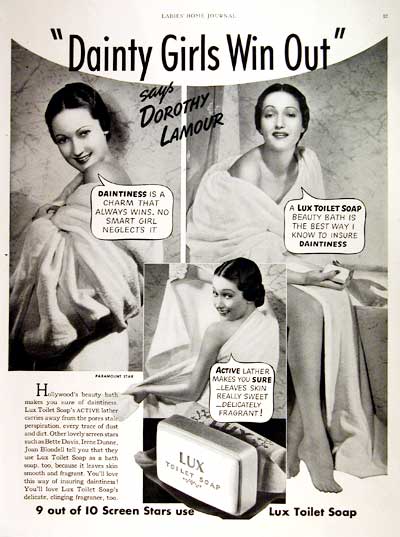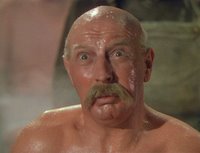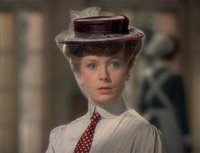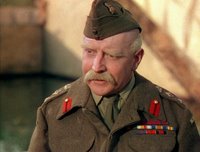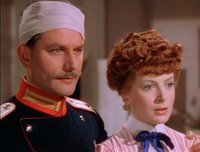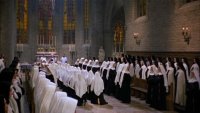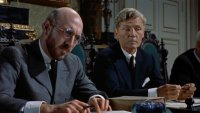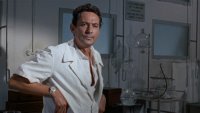MovieNite 8th Anniversary celebration! 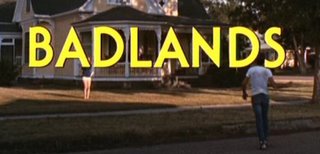 Pamela's Nite
Pamela's Nite
Beef bourginon, camembert mashed potatoes, braised red cabbage, lemon butter broccolini and lemon bundt cake
Malick interview from Sight and Sound via Eskimo:
Interviewing Terry Malick,producer-writer-director of Badlands, turned out, like his film, to be full of idiosyncratic surprises. My prepared list of questions went by the wayside as Malick talked with passion, conviction and sometimes anger about his film. Acknowledging that he "couldn't have asked for more" in terms of critical acceptance, he also indicated that the actual filming was painful. Working in the dead heat of the 1972 summer, with a non-union crew and little money ($300,000, excluding some deferments to labs and actors), Malick encountered all sorts of problems, from difficulties over finance to the destruction of all the cameras during a fire sequence. Eventually, upon completion, Warners bought Badlands for just under a million dollars. It might turn in a decent profit for them.
 The son of an oil company executive, Malick grew up in Texas and Oklahoma. He went to Harvard and later to Magdalen College, Oxford, as a Rhodes Scholar. Philosophy was his course of study, but he never completed his thesis--in fact, his topic wasn't even acceptable to his Senior Tutor, Gilbert Ryle. Summer jobs took him from the wheat harvests in America and Canada, to work in oilfields and riving a cement mixer in a railyard, to journalistic endeavours for Life, Newsweek and the New Yorker. He was sent to Bolivia to observe the trial of Regis Debray; Che Guevara was killed the day after his arrival. In 1968, he was appointed a lecturer in philosophy for one year at MIT.
The son of an oil company executive, Malick grew up in Texas and Oklahoma. He went to Harvard and later to Magdalen College, Oxford, as a Rhodes Scholar. Philosophy was his course of study, but he never completed his thesis--in fact, his topic wasn't even acceptable to his Senior Tutor, Gilbert Ryle. Summer jobs took him from the wheat harvests in America and Canada, to work in oilfields and riving a cement mixer in a railyard, to journalistic endeavours for Life, Newsweek and the New Yorker. He was sent to Bolivia to observe the trial of Regis Debray; Che Guevara was killed the day after his arrival. In 1968, he was appointed a lecturer in philosophy for one year at MIT.
"I was not a good teacher; I didn't have the sort of edge one should have on the students, so I decided to do something else. I'd always liked movies in a kind of naive way. They seemed no less improbable a career than anything else. I came to Los Angeles in the fall of 1969 to study at the AFI; I made a short called Lanton Mills. I found the AFI very helpful; it's a marvellous place. My wife was going to law school and I was working for a time as a rewrite man-two days on Drive, He Said, five weeks on the predecessor to Dirty Harry at a time when Brando was going to do it with Irving Kershner directing. Then we all got fired by Warners; the project went to Clint Eastwood. I rewrote Pocket Money and Deadhead Miles. I got this work because of a phenomenal agent, Mike Medavoy.
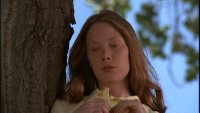 "At the end of my second year here, I began work on Badlands. I wrote and, at the same time, developed a kind of sales kit with slides and video tape of actors, all with a view to presenting investors with something that would look ready to shoot. To my surprise, they didn't pay too much attention to it; they invested on faith. I raised about half the money and Edward Pressman (the executive producer) the other half. We started in July of 1972.
"At the end of my second year here, I began work on Badlands. I wrote and, at the same time, developed a kind of sales kit with slides and video tape of actors, all with a view to presenting investors with something that would look ready to shoot. To my surprise, they didn't pay too much attention to it; they invested on faith. I raised about half the money and Edward Pressman (the executive producer) the other half. We started in July of 1972.
 "The critics talked about influences on the picture and in most cases referred to films I had never seen. My influences were books like The Hardy Boys, Swiss Family Robinson, Tom Sawyer, Huck Finn--all involving an innocent in a drama over his or her head. I didn't actually think about those books before I did the script, but it's obvious to me now. Nancy Drew, the children's story child detective--I did think about her."
"The critics talked about influences on the picture and in most cases referred to films I had never seen. My influences were books like The Hardy Boys, Swiss Family Robinson, Tom Sawyer, Huck Finn--all involving an innocent in a drama over his or her head. I didn't actually think about those books before I did the script, but it's obvious to me now. Nancy Drew, the children's story child detective--I did think about her."
"There is some humour in the picture, I believe. Not jokes. It lies in Holly's mis-estimation of her audience, of what they will be interested in or ready to believe. (She seems at time to think of her narration as like what you get in audio-visual courses in high school.) When they're crossing the badlands, instead of telling us what's going on between Kit and herself, or anything of what we'd like and have to know, she describes what they ate and what it tasted like, as though we might be planning a similar trip and appreciate her experience, this way."
"Kit doesn't see himself as anything sad or pitiable, but as a subject of incredible interest, to himself and to future generations. Like Holly, like a child, he can only really believe in what's going on inside him. Death, other people's feelings, the consequences of his actions-they're all sort of abstract for him. He thinks of himself as a successor to James Dean-a Rebel without a Cause-when in reality he's more like an Eisenhower conservative. 'Consider the minority opinion,' he says into the rich man's tape recorder, 'but try to get along with the majority opinion once it's accepted.' He doesn't really believe any of this, but he envies the people who do, who can. He wants to be like them, like the rich man he locks in the closet, the only man he doesn't kill, the only man he sympathises with, and the one least in need of sympathy. It's not infrequently the people at the bottom who most vigorously defend the very rules that put and keep them there."
"And there's something about growing up in the Midwest. There's no check on you. People imagine it's the kind of place where your behaviour is under constant observation, where you really have to toe the line. They got that idea from Sinclair Lewis. But people can really get ignored there and fall into bad soil. Kit did, and he grew up like a big poisonous weed."
 "I don't think he's a character peculiar to his time. I tried to keep the 1950s to a bare minimum. Nostalgia is a powerful feeling; it can drown out anything. I wanted the picture to set up like a fairy tale, outside time, like Treasure Island. I hoped this owuld, among other htings, take a little of the sharpness out of the violence but still keep its dreamy quality. Children's books are full of violence. Long John Silver slits the throats of the faithful crew. Kit and Holly even think of themselves as living in a fairy tale. Holly says, "Sometimes I wished I could fall asleep and be taken off to some magical land, but this never happened." But she enough believes there is such a place that she must confess to you she never got there."
"I don't think he's a character peculiar to his time. I tried to keep the 1950s to a bare minimum. Nostalgia is a powerful feeling; it can drown out anything. I wanted the picture to set up like a fairy tale, outside time, like Treasure Island. I hoped this owuld, among other htings, take a little of the sharpness out of the violence but still keep its dreamy quality. Children's books are full of violence. Long John Silver slits the throats of the faithful crew. Kit and Holly even think of themselves as living in a fairy tale. Holly says, "Sometimes I wished I could fall asleep and be taken off to some magical land, but this never happened." But she enough believes there is such a place that she must confess to you she never got there."
Via Sense of Cinema:
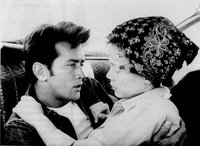 Malick's first film Badlands (1973) is ostensibly a semi-factual account of a mass-murderer and his girlfriend, set in the 1950s. What's immediately unusual about the film is its lack of interest in trying to explain the causes of its protagonists' violent behaviors, and furthermore, its lack of moral judgment of these individuals or the culture that produced them. Instead the film's focus is concentrated on their experience of alienation from the world that they inhabit and its values. As Heidegger might put it, the intelligibility of the world and the values people share are, at bottom, not based on justifications, nor are they arbitrary. It is a given fact, if you will, that they are based neither on unshakable foundations nor on arbitrary consensus.
Malick's first film Badlands (1973) is ostensibly a semi-factual account of a mass-murderer and his girlfriend, set in the 1950s. What's immediately unusual about the film is its lack of interest in trying to explain the causes of its protagonists' violent behaviors, and furthermore, its lack of moral judgment of these individuals or the culture that produced them. Instead the film's focus is concentrated on their experience of alienation from the world that they inhabit and its values. As Heidegger might put it, the intelligibility of the world and the values people share are, at bottom, not based on justifications, nor are they arbitrary. It is a given fact, if you will, that they are based neither on unshakable foundations nor on arbitrary consensus.
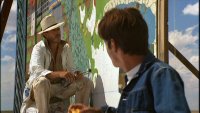 Malick's lack of interest in the causes of the characters' behaviors should not be understood as itself a moral judgment, as if their actions are in some nebulous way justified. This film is not a polemic, like Kiéslowski's A Short Film about Killing (1988). Rather, Malick's point seems to be that mere condemnation, or trying to determine the causes of their actions, essentially evades the fact that our world and values sometimes are unable to deal with certain human possibilities.
Malick's lack of interest in the causes of the characters' behaviors should not be understood as itself a moral judgment, as if their actions are in some nebulous way justified. This film is not a polemic, like Kiéslowski's A Short Film about Killing (1988). Rather, Malick's point seems to be that mere condemnation, or trying to determine the causes of their actions, essentially evades the fact that our world and values sometimes are unable to deal with certain human possibilities.
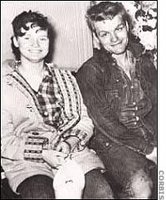 Via Crime Library:
Via Crime Library:
In 1958, nineteen-year-old Charles Starkweather was desperate. Desperate to marry his jailbait girlfriend. Desperate to make some money for himself so he wouldn't be broke every day of his life. Desperate to get out of the Nebraska town where everyone had figured him for a loser.
He and Caril Fugate embarked on a murder spree that horrified the country. This was the country that had elected Eisenhower and Nixon for a second term in 1956 and where the FBI's J. Edgar Hoover was firmly entrenched as the national policeman. This was also a country that was undergoing unsettling cultural changes. Frightening and offensive symbols of rebellion emerged and thrived: Elvis Presley, James Dean and the whole rock 'n roll culture focused on a new generation that challenged the status quo of the sterile 1950's.
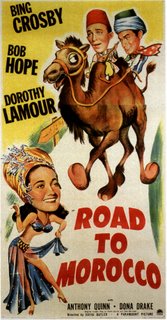 Peter's Nite
Peter's NiteFrom 100 Reasons to Toast Bob Hope via USA TODAY:
HOPE: We played the Capitol Theater in New York, which was a big picture house. And Bing and I were featured. Abe Lyman (ph) was the orchestra. And we did three and four shows a day. And it got kind of boring, me just introducing them. So we started to ad lib. And we built up a couple of routines, like the president and the Pepsi Cola Company meeting the president of Coca-Cola on the street. We'd say hello and then we'd belch in the mike. And then I'd belch again and say bigger bottle with Pepsi.
CALLER: Perhaps no other person has been in a better position to see the progress of the American GI. Is there any difference between the GIs of my era and Vietnam from -- to World War II to the present?
Bob Hope regular Jerry Colonna:
In the late 30's Jerry's career took an unexpected turn. Comedian Minerva Pious, who played Mrs. Nussbaum on the Fred Allen show, loved Jerry's off-stage antics (he had received so many warnings from CBS for his pranks that he was finally put on perpetual notice. But they never actually fired him -- he was too good a trombonist). Pious decided that Fred Allen, a workaholic, needed a laugh, so she convinced him that Jerry was a brilliant operatic tenor and that Fred should give him an audition. When Jerry gave out with an ear-splitting "You're My Everything," Fred literally fell to the floor laughing and gave him a few guest spots on the show. These led to movie roles, and to the Kraft Music Hall, hosted by Bing Crosby. Bing took Minerva Pious' in-house joke to new lengths by announcing publicly that Giovanni Colonna, one of the greatest living baritones (!) would make his American radio debut on the show. After that broadcast, a number of classical music critics stopped talking to Bing altogether. The following summer, following an appearance at the Del Mar racetrack clubhouse, Jerry was approached by Bob Hope, and radio history was begun.
Jerry's recordings ("I have destroyed many beautiful songs.") are collected today by connoisseurs of madcap comedy. He is probably best known for his hysterical versions of "On The Road To Mandalay" and "Ebb Tide" (where most recordings of the latter began with the sounds of surf and seagulls, Colonna's also includes chickens).
Hope and Crosby enjoyed themselves ad libbing so much, that Dorothy Lamour gave up memorizing her lines, and decided that getting a good’s night sleep so she could keep up with the improvised wordplay was the best preparation possible. Just because the dialogue was not in the script, didn’t mean that someone didn’t write it, since Hope and Crosby both brought in their radio gag writers to punch up the lines. The director conceded, “You know, I really shouldn’t take any money for this job. All I do is say ‘Stop’ and ‘Go.’” They genuinely seemed to enjoy each other’s company and their friendship, on stage and on the golf course, would continue the rest of their lives. The Road to Singapore, as the film was eventually titled was the first of the 7 Road pictures they would make together. The huge success of the "Road" films was instrumental to Bob Hope's status from 1941-1953 as one of the top 10 box office draws (except for one year). The second "Road" film (…to Zanzibar) was yet another script plucked off a dusty shelf, but the third one, The Road to Morocco, was original material, tailored to Hope and Crosby.
This is considered the best of the "Road" pictures. The formula for success includes topical humor similar to that incorporated into Hope’s radio show. The director of this film, David Butler, was well-suited to the comic task, having grown up at Mack Sennett’s slapstick comedy studio in the silent era, and he knew both how to structure a comic scene and when to let the stars wing-it. Rehearsals lost some of the comic spontaneity, so Butler said, “I’d always let the camera run, and we got some of our funniest stuff after the scene was over. I’d even let the camera roll until they got off the set, or walked out, or whatever happened.” This paid off best in the scene where a cranky camel spits in Bob’s eye, and Bing’s laughter shows his surprise. But, as a former stuntman, Butler also volunteered the rather sedentary Hope and Crosby for a thrill or two they would have preferred to avoid, as when a stampede of horses got out of hand, and the stars narrowly escaped being trampled.
The costumes, as for all Paramount “A” films, were designed by Edith Head, who at this point in her career worked on between 40 and 50 films a year. She enjoyed working on the Road films, and wrote in her autobiography, “I didn’t have to worry about authenticity. If somebody wrote and said, ‘Edith, in Morocco they don’t wear headdresses like that,’ I didn’t give a damn. If Bob Hope wanted to wear it because it was funny, he wore it.” (Head). Hope loved dressing up and Crosby hated it. Lamour, who had started in sarongs (she was sewn into them, so they wouldn’t untie) loved the exotic glamour of films like Road to Morocco. “Bob has a special place in my heart for what he did for my costumes in the Road pictures. It was his enthusiasm that really inspired everyone else to get into the spirit of the Roads. There were chaotic plots and gags and lavish sets and great music, but Bob Hope pulled it all together.” (Head).
The pairing of Crosby and Hope was inspired, with the two men having an instant chemistry. They were forever ad-libbing, generally at each other's expense, and trying to outdo each other to the point where Lamour wondered why she ever bothered learning the scripts for the films. Lamour herself was the perfect foil for Hope and Crosby - beautiful and exotic and equally at home singing with Crosby or setting up jokes for Hope.
Road to Morocco marked the Road... films hitting their stride and it was nominated for two Oscars: Best Screenplay (Frank Butler and Don Hartman) and Best Sound Recording (Loren L Ryder). One of the film's funniest moments, however, was completely unscripted. In a scene with Hope, Crosby and a camel, the camel decided to spit heavily in Hope's face. Fortunately, the cameras were rolling and the director was so amused by the expressions on the actors' faces that he kept the shot, with Crosby complimenting the camel on its impeccable taste.
The film also saw an increase in the self-referential and slightly surreal moments that were a staple of the Road... films. For example, the film features a camel remarking that 'this is the screwiest picture I was ever in'. The film also features Hope as the ghostly Aunt Lucy, who appears to remind Peters of his obligations to his friend.
In 1946, just prior to the production of Paramount's mystery-comedy My Favorite Brunette (Elliott Nugent, 1947), Dorothy Lamour, with the full assistance of the studio's publicity department, staged a memorable stunt. She publicly burned a sarong, the skimpy South Seas garment with which she had been inseparably associated since her first starring role, in Paramount's 1936 tropical romance The Jungle Princess (Wilhelm Thiele) (Head and Calistro, 67). Between The Jungle Princess and My Favorite Brunette, her busiest period as an actress, Lamour had appeared in 34 feature films, in the process establishing herself as Paramount's top female box office attraction. Lamour appeared in a sarong in 11 of those films, meaning that fully two-thirds of her roles during that ten-year span did not call for her to wrap herself in any manner of South Seas attire. But there was something indelible about the connection between Lamour and her trademark garment: audiences seemed to remember her not for the variety of roles she played, but for those roles in which she appeared in a revealing sarong.
By publicizing the stunt, the studio was offering a non-sarong-clad Lamour to the public, as well as simultaneously reminding them that Dorothy Lamour and the sarong would be forever united. The very act of burning the sarong could only serve as a reminder that Lamour's sarong pictures were extremely popular. Lamour was always presented in the context of her trademark attire. Despite the stunt, Lamour would don the sarong again at least four more times in her long career.
